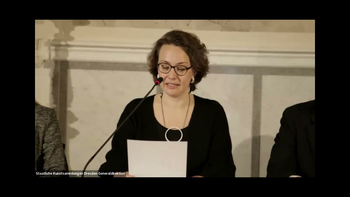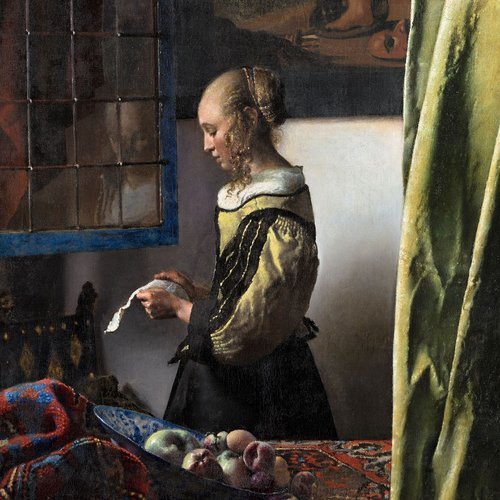Invitation to the presentation of ‘The Royal Dresden Porcelain Collection’ digital platform
16 January 2024Livestream
Privacy notice
When you play our YouTube or Vimeo videos, information about your use of YouTube or Vimeo is transmitted to the US operator and may be stored. In addition, external media such as videos or fonts are loaded and stored in your browser.

Link
Media representatives are cordially invited to participate in a Zoom call on Tuesday, 23 January 2024 at 10 a.m. The event will be held in English. A recording of the press conference will also be available shortly after the event.
Einladung zur Präsentation der digitalen Plattform „The Royal Dresden Porcelain Collection“
The Porzellansammlung (porcelain collection) of the Staatliche Kunstsammlungen Dresden (SKD) is regarded as one of the world’s highest-quality and largest collections devoted to ceramics. The wealth of treasures in the former royal collection include Chinese and Japanese porcelain as well as unique masterpieces from the early days of the Meissen manufactory. Around 8,200 of the originally more than 29,000 East Asian ceramics in the collection are still preserved today. Of these, the most beautiful and important pieces are exhibited in the Dresden Zwinger. The majority are stored in depots, away from the public eye.
All the surviving East Asian porcelain objects from Augustus the Strong’s collection have been digitally catalogued for the first time as part of the Dresden Porcelain Project, an international research collaboration that began in 2014 and has lasted a decade. From now on, all the objects will be freely accessible to everyone on ‘The Royal Dresden Porcelain Collection’ platform. This flagship project offers a unique insight into the fascinating world of porcelain and sets new standards in digital publishing.
The English-language platform is aimed not only at a specialist audience but also at the general public, inviting them to interact with this important cultural heritage.
Another invaluable aspect is the integration of the six extant inventory books from the 18th century, which provide us with new insights today, for example, about the trade routes for East Asian porcelain at the time and its reception and appreciation at the Saxon court. They were transcribed and translated into English for the first time as part of the project.
This reference collection and its sources were researched in close collaboration with an international team of 35 scholars from Europe, China, Japan, Taiwan and the USA. They contributed to digitising, publishing and making the entire historical collection of East Asian porcelain accessible online for the first time. The platform interconnects all the data and content in such a way that it can be accessed both exploratively and in different contexts from anywhere in the world.
Unrestricted access to all of the extensive material is freely available in accordance with the principles of open access, inviting and opening up new transcultural and transdisciplinary collaborations. During the course of the project, Adrian Sauer took over 36,000 new photographs of the porcelain objects from multiple angles, which can be magnified. These can be downloaded under Creative Commons licenses.
The digital platform was created together with the Dresden-based software company Robotron GmbH and TBO Interactive in Berlin. They provided the design, technical concept, and brought the project to fruition in close cooperation with the Porzellansammlung.
The project was made possible by the support of the two main sponsors, the Bei Shan Tang Foundation in Hong Kong and the Ernst von Siemens Art Foundation. Numerous other national and international institutions and private individuals contributed to creating the platform, including the Museum & Research Foundation, the Freundeskreis der Dresdner Porzellansammlung im Zwinger e. V., the Chiang Ching-kuo Foundation for International Scholarly Exchange in Taipei, and the CERAMICA Foundation Basel.
Barbara Klepsch, Minister of State for Culture and Tourism: “The Dresden Porzellansammlung digital platform offers the opportunity to experience the East Asian porcelain collection of Augustus the Strong – the largest of its kind outside Asia – in all its richness and diversity. In line with the digital strategy for the Free State of Saxony, it offers everyone free access to this world-famous historical collection. The great interest from China and Japan in particular confirms that Dresden’s unique art treasures not only play a regionally inspiring and identity-forming role, but also generate international interest.”
Marion Ackermann, Director General of the Staatliche Kunstsammlungen Dresden: “The Porzellansammlung opened its depots and archives to a 35-member panel of experts from Asia, Europe and the USA so that they could research the Augustan East Asian collection. An innovative digital platform has resulted from the intensive international collaboration and the pooling of knowledge. It can be regarded as a flagship project of the Dresden State Art Collections. We utilise the possibilities of the digital space to present our collections so that they can be explored from a wide range of individual interests.”
Julia Weber, Director of the Porzellansammlung: “‘The Royal Dresden Porcelain Collection’ platform transplants the world-famous porcelain collection of Augustus the Strong into the digital realm so that it can be scrutinised anew with our current tools and techniques. I would like to express my sincere thanks to the many participants and sponsors who have made our ambitious vision a reality. The intensive transcultural and transdisciplinary exchange on the Augustan collection does not end here. On the contrary, the platform offers a new basis for future research. We look forward to insightful encounters with our guests in both the digital and analogue spaces.”
Chien Lee, Chairman, Bei Shan Tang Foundation, Hong Kong: “We extend our heartfelt congratulations on the launch of ‘The Royal Dresden Porcelain Collection’ digital platform, the result of ten years of work by an international team. Rooted in scholarly research, this platform provides comprehensive and visually captivating access to a unique collection of East Asian porcelain, serving experts and enthusiasts worldwide. Bei Shan Tang Foundation was established in 1985 to institutionalise the late Dr J. S. Lee’s philanthropic commitment to advancing scholarship in the field of Chinese art and culture. This project greatly resonates with the Foundation’s mission in its commitment to advance the understanding of Chinese ceramics in a global context.”
Martin Hoernes, Secretary General of the Ernst von Siemens Art Foundation: “The founder of the foundation, Ernst von Siemens, was passionate about sharing his love for music and art and facilitating access and participation for a broad public. In this spirit, the Ernst von Siemens Art Foundation is breaking new ground in the promotion of digital platforms and collection catalogues, supporting museums that are seeking and developing new forms of accessibility for their works. We are very proud to include ‘The Royal Dresden Porcelain Collection’ in our portfolio of now 330 funded analogue and digital scholarly museum catalogues.”
From 23 January the website can be accessed at the following link: royalporcelaincollection.skd.museum
